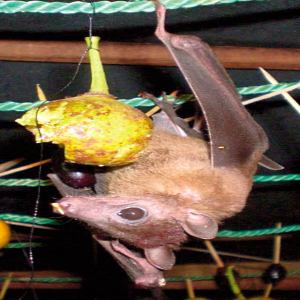 Smart Citations
Smart CitationsSee how this article has been cited at scite.ai
scite shows how a scientific paper has been cited by providing the context of the citation, a classification describing whether it supports, mentions, or contrasts the cited claim, and a label indicating in which section the citation was made.
Bat flies: source of supplement nutrients for an endemic Malagasy fruit bat
Among frugivorous vertebrates, the nutritional composition of consumed fruits often needs supplementing by other food types, such as leaves, pollen or invertebrates, to meet dietary requirements. The endemic Malagasy fruit bat, Rousettus madagascariensis (Pteropodidae), actively feeds on their dipteran fly ectoparasites, principally of the family Nycteribiidae and Streblidae, during grooming activities. Since bat flies take blood meals from their hosts, the consumption of these flies by bats might represent a mechanism of recycling and reducing the loss of important nutritional components, such as minerals or proteins and fatty acids. The contribution of these ectoparasites to the diet of R. madagascariensis is 4–10% of the daily protein requirements. This is an important proportion for a species considered to be exclusively frugivorous.
Downloads
Citations

Supporting Agencies
Association Vahatra, Helmsley Charitable TrustHow to Cite

This work is licensed under a Creative Commons Attribution-NonCommercial 4.0 International License.
PAGEPress has chosen to apply the Creative Commons Attribution NonCommercial 4.0 International License (CC BY-NC 4.0) to all manuscripts to be published.






